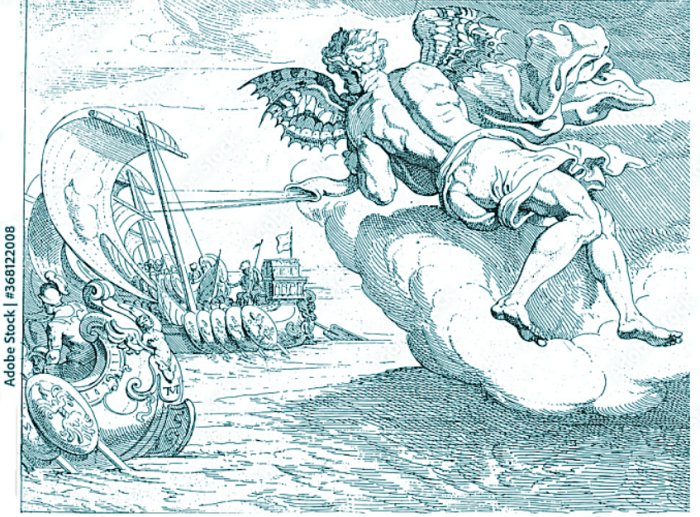Powerful Winds In Ancient Beliefs
A. Sutherland - AncientPages.com - In ancient beliefs, the winds were of divine origin, but not everyone agreed on the place of their residence and lineage.
However, many agreed, through the ages, that the winds helped gods and goddesses in different, often most extraordinary situations. They also helped and endangered people.
Zephyrus blows Odysseus ship forward. Credit: Adobe Stock - Morphart
One of them was a highly respected and powerful goddess, Artemis. When Agamemnon, one of the legendary warriors of the Trojan War in the Iliad, once offended Artemis, she took revenge against him by calming the winds that bore Agamemnon's fleet toward Troy.
The gods of the four principal winds (northern, southern, eastern, and western) were Boreas, Notos, Zephyr, and Euros. All four Anemoi – were believed to be the sons of Astraeus, god of the dusk and the goddess of the dawn Eos.
Most often, Thrace located in Southeast Europe, was believed to represent the homeland of the winds. Above all, Boreas has his palace of the sky, while other winds dwell in various caverns. Boreas is the most powerful and most dangerous of them.
Homer's Odyssey mentions a beautiful story about the winds and a fabulous land called Aeolia, probably located on one of the Aeolian Islands, north of Sicily. Aeolia was a floating island surrounded by bronze ramparts. It was a true fortress.
Aeolia was the home to Aeolus (Ajolos), who was the best friend of the gods and the king of the winds. He had twelve children: six daughters and six sons. He married them to himself so that they would not be parted from each other, and they lived in wealth and happiness. Zeus has put all the winds under his guard as sometimes, he has to calm them; sometimes, he orders them to blow again.
However, he must keep an eye on them all the time. Otherwise, they could break free from their bonds and wreak havoc on Earth.
In one story, Poseidon put a spell upon Odysseus, a legendary Greek king of Ithaca and the hero of Homer's epic poem, the Odyssey.
Odysseus should wander the seas for at least a decade. But this time, he had much luck when they stayed with the master of the winds, Aeolus, who offered him a bottle containing all the winds except the one that would take him back to Ithaca. The ships came just in sight of Ithaca, and everything was going fine, but not all the way home.
Unfortunately, Odysseus' companions opened the bottle while he was asleep and released all the winds. Most probably, in the bottle, they expected to find treasures instead. The winds immediately caused a furious storm that drove the ship far away from Ithaca and back to Aeolia.
Eventually, Odysseus and his crew found the master Aeolus again, but this time, he refused to help them further.
Worshiping Of Winds Has Deep Roots In Antiquity
The worship of the winds was widespread, especially among farmers and sailors. Near the seashore, the shrines and chapels were built by worshippers of the winds.
The tower of the winds. Credit: Joanbanjo - CC BY-SA 3.0
Art, especially bas-reliefs and paintings, is often associated with the gods of the winds.
The most famous monument is the octagonal Tower of the Winds in Athens, adorned with a frieze showing the eight winds. This building housed a horologium, a water clock that showed the exact time.
The winds – our eternal companions that we experience daily - are memorized in ancient myths and thanks to a beautiful tower in Athens.
Let's now look into the Slavic beliefs in the power of winds. The Slavs had slightly different beliefs about winds. The patron saint of the wind was Stribog (in Polish: Strzybóg). The one who is the link between the three worlds. Some believed that the wind was good and even divine. As a deity, it had a human personality and was respected as associated with good and evil, harvest, or war. It was a divine power ensuring prosperity and fertility.
In pagan times, the Slavs believed the wind symbolized changeability and ensured fertility and prosperity.
Also, Triglav, another powerful Slavic deity, was responsible for sea conditions. Sailors made offerings to the gods of the wind and asked for good weather during their boat journeys.
Written by – A. Sutherland - AncientPages.com Senior Staff Writer
Copyright © AncientPages.com All rights reserved. This material may not be published, broadcast, rewritten or redistributed in whole or part without the written permission of AncientPages.com
Expand for referencesReferences:
Phillips, Martin R., Mythology
Hamilton Edith, Mythology
More From Ancient Pages
-
 Gigantic Unfinished Stone Structures Cut With Amazing Stone-Working Techniques
Civilizations | Sep 21, 2015
Gigantic Unfinished Stone Structures Cut With Amazing Stone-Working Techniques
Civilizations | Sep 21, 2015 -
 Michabo (Michabou) – Algonquins’ Great Spirit With Power Over The Earth
Myths & Legends | Aug 6, 2024
Michabo (Michabou) – Algonquins’ Great Spirit With Power Over The Earth
Myths & Legends | Aug 6, 2024 -
 Our Lives Have Always Been Manipulated By Money – Part 2
Featured Stories | Jun 4, 2022
Our Lives Have Always Been Manipulated By Money – Part 2
Featured Stories | Jun 4, 2022 -
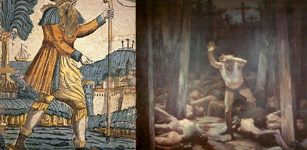 Legend Of The Immortal Wandering Jew Cursed By Jesus
Biblical Mysteries | Jul 17, 2018
Legend Of The Immortal Wandering Jew Cursed By Jesus
Biblical Mysteries | Jul 17, 2018 -
 Mysterious Mythical Tree Connected To Strange Islands Found By Ancient Explorers
Featured Stories | Apr 13, 2024
Mysterious Mythical Tree Connected To Strange Islands Found By Ancient Explorers
Featured Stories | Apr 13, 2024 -
 Mystery Of The Knights Templar – Secret Mission And Loss Of A Great Treasure – Part 2
Ancient Mysteries | Aug 23, 2019
Mystery Of The Knights Templar – Secret Mission And Loss Of A Great Treasure – Part 2
Ancient Mysteries | Aug 23, 2019 -
 Chilling Story Of Glamr Who Became A Draugr, A Living Dead – Scary Yule Haunting
Norse Mythology | Dec 29, 2024
Chilling Story Of Glamr Who Became A Draugr, A Living Dead – Scary Yule Haunting
Norse Mythology | Dec 29, 2024 -
 Ancient Nomads You’ve Probably Never Heard Of Disappeared From Europe 1,000 Years ago. Now, DNA Analysis Reveals How They Lived
Featured Stories | Jun 20, 2024
Ancient Nomads You’ve Probably Never Heard Of Disappeared From Europe 1,000 Years ago. Now, DNA Analysis Reveals How They Lived
Featured Stories | Jun 20, 2024 -
 Xibalba: Nine-Leveled Underground Place Of Fear Ruled By Lords Of Death In Maya Beliefs
Featured Stories | May 12, 2020
Xibalba: Nine-Leveled Underground Place Of Fear Ruled By Lords Of Death In Maya Beliefs
Featured Stories | May 12, 2020 -
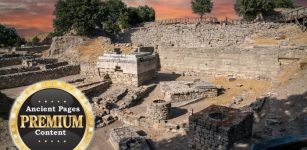 Mystery Of The Large Ancient Boulders In Ireland And Britain – Possible Connection To The City Of Troy?
Featured Stories | Oct 17, 2023
Mystery Of The Large Ancient Boulders In Ireland And Britain – Possible Connection To The City Of Troy?
Featured Stories | Oct 17, 2023 -
 Bighorn Medicine Wheel: Sacred Site And Ancient Solar Observatory
Civilizations | May 29, 2016
Bighorn Medicine Wheel: Sacred Site And Ancient Solar Observatory
Civilizations | May 29, 2016 -
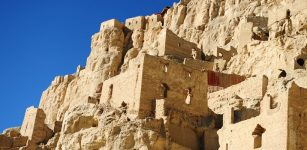 Ruins Of The Mysterious Kingdom Of Guge That Suddenly Vanished Overnight
Civilizations | Apr 10, 2021
Ruins Of The Mysterious Kingdom Of Guge That Suddenly Vanished Overnight
Civilizations | Apr 10, 2021 -
 Freemasons Secrets – American Democracy Is Part Of An Ancient Universal Plan – The Beginning And The Dream Of A Brotherhood Of Men – Part 1
Ancient Mysteries | Jul 12, 2018
Freemasons Secrets – American Democracy Is Part Of An Ancient Universal Plan – The Beginning And The Dream Of A Brotherhood Of Men – Part 1
Ancient Mysteries | Jul 12, 2018 -
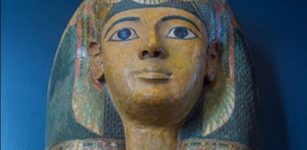 Ancient Egyptians Knowledge Of Psychiatry – Importance Of The Sorcerer And The Mysterious Zar Dance
Ancient History Facts | Apr 24, 2020
Ancient Egyptians Knowledge Of Psychiatry – Importance Of The Sorcerer And The Mysterious Zar Dance
Ancient History Facts | Apr 24, 2020 -
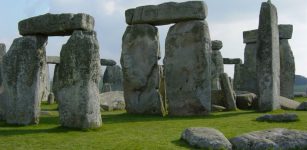 Stonehenge May Have Aligned With The Moon As Well As The Sun
Featured Stories | Jun 4, 2024
Stonehenge May Have Aligned With The Moon As Well As The Sun
Featured Stories | Jun 4, 2024 -
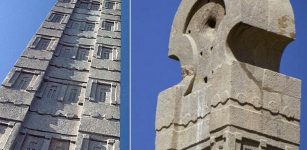 Axum: Mysterious Megalithic Towering Obelisks In Ethiopia
Civilizations | Aug 21, 2018
Axum: Mysterious Megalithic Towering Obelisks In Ethiopia
Civilizations | Aug 21, 2018 -
 Strange Ancient Measurements Of The Earth Revealed – Ancient Texts And Physical Evidence Examined
Ancient Mysteries | Apr 11, 2018
Strange Ancient Measurements Of The Earth Revealed – Ancient Texts And Physical Evidence Examined
Ancient Mysteries | Apr 11, 2018 -
 Legend Of Gyanganj – Antediluvian City Of Immortal Sages That Can Only Be Found By The Chosen Ones
Featured Stories | Jul 29, 2017
Legend Of Gyanganj – Antediluvian City Of Immortal Sages That Can Only Be Found By The Chosen Ones
Featured Stories | Jul 29, 2017 -
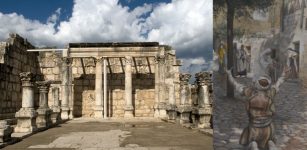 Capernaum – Was The City On The Sea Jesus’ Home?
Biblical Mysteries | Jan 25, 2019
Capernaum – Was The City On The Sea Jesus’ Home?
Biblical Mysteries | Jan 25, 2019 -
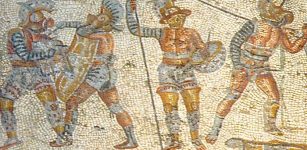 Were There Gladiators In Roman Britain? An Expert Reviews The Evidence
Featured Stories | Mar 14, 2023
Were There Gladiators In Roman Britain? An Expert Reviews The Evidence
Featured Stories | Mar 14, 2023

